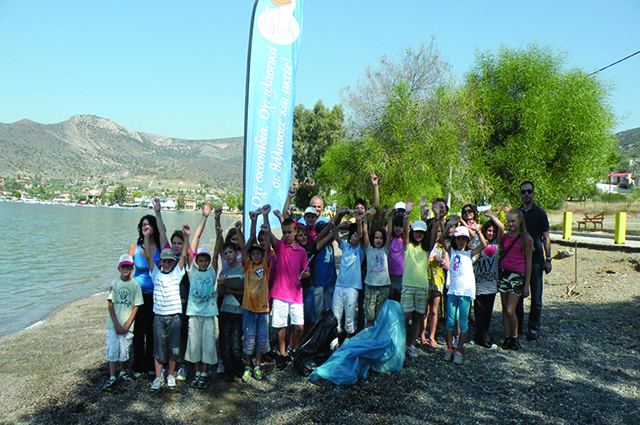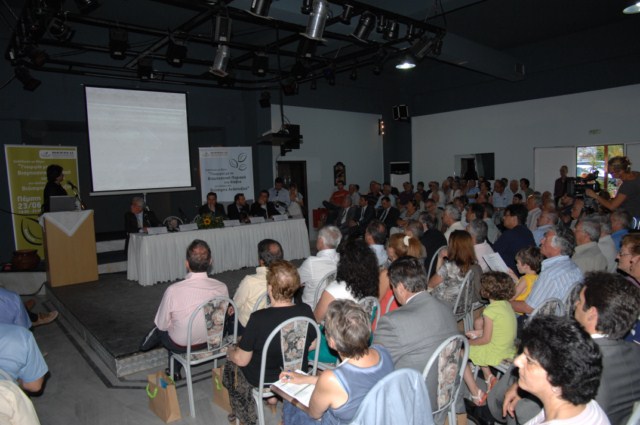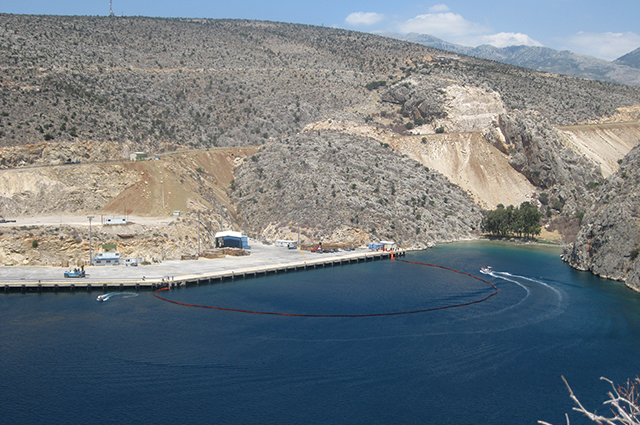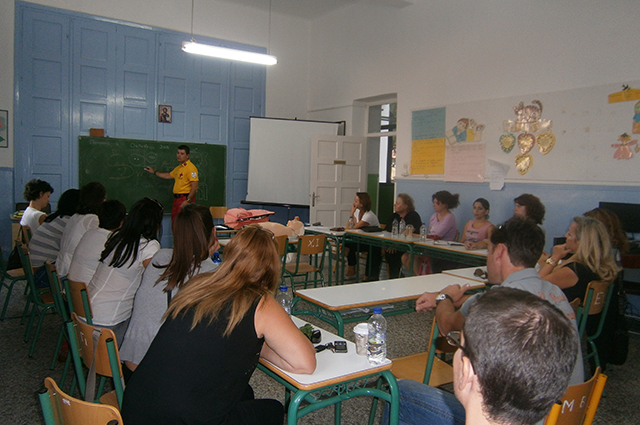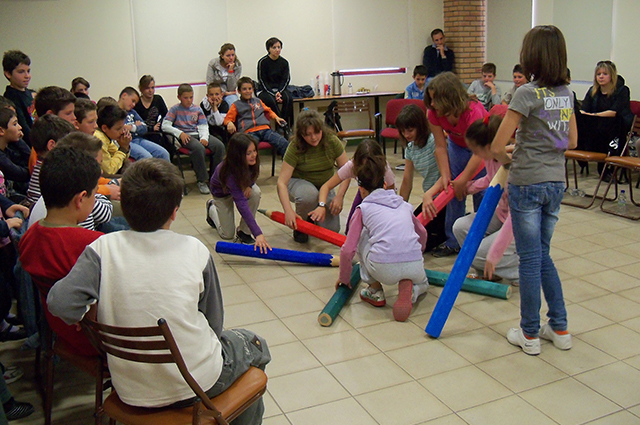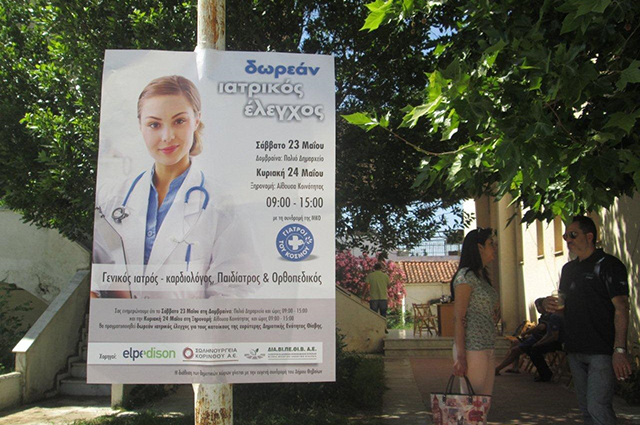The history of Thisvi
Viotia
According to Strabo, Viotia was the country with “three seas”, as it was surrounded by the Corinthian Gulf at south, Evoikos at northeast and Evripos at the southeast.
The archaeological sites of Viotia are extended, beyond its terrestrial area, to the rocky islands of the Corinthian Gulf. The number of cities along the northern coasts of the Corinthian Gulf in ancient Viotia, such as Krefsis (Livadostra), Tifa or Sifa (Alyki), Korsies (Hostia), Voulida (Zaltsa), Fokikos Medon, the White Houses, Antikyra (Palatia, Steno, Vroulias), as well as the islands of Kouveli, Makronissos (Diporto), Ampelos and Daskalio demonstrate the existence of a sea road with sheltered and safe harbors offering a passage to the inland for commercial or military purposes.
Thisvi
According to archeological data, the habitation of Thisvi has been continuous from the Mycenaean period to the Christian times. As mentioned in mythology it took its name from the nymph Thisvi, the daughter of Asopos god. Homer in Iliad includes Thisvi among the cities that took part in the Trojan War. There, it calls it “politrirona” because of the large number of pigeons living in the area. At the end of the Archaic period it was an autonomous city and was a member of the Boeotian Community (about 525-520 BC). Thisvi participated in the Third Macedonian War (172-168 BC), supporting the Macedonian king Perseus. But, shortly after its beginning, Thisvi was besieged and finally conquered by the Romans. In the 2nd century AD, Pausanias, describing Thisvi, gives information on the existence of the sanctuary of Hercules and the organization of a celebration in honor of him. Particular reference is made in the presence of an ancient embankment that functioned as a drainage project.
In Thisvi there are remains of two fortified citadel. The oldest is located on the hill north of the present village, where the position of Ancient Thisvi. It is about the Palaiokastro or Upper Acropolis, the walls of which are characterized by at least four building phases, from the Archaic period to the Late Roman and Early Christian years. However, it continued to be in use later in the Middle and Late Byzantine periods. The Lower Acropolis, also called Neokastro, dates back to the Hellenistic period, with retrofits during the Byzantine era. Its architectural remains are detected on the south side of the site.
Out of the walls, in the rocky hills, a large number of burials have been carved. Their dimensions vary depending on the arcosols that have been formed inside them, while, individual arcosols also exist. They are dated in the Early Christian period. However, they are not unlikely to belong to an earlier era – at least some of them – until the first Christian era.
The historical testimonies of Thisvi during Byzantium are inadequate and do not substantiate its particular characteristics and the way in which its society is organized. Its ancient name was in use until the Early Christian period. At the end of the Late Byzantine period and during the Ottoman times it reappears under the name “Kakosi”, until 1915, when the settlement was renamed to Thisvi. However, the unbroken habitation of the area during the Middle and Late Byzantine period is revealed by the archaeological superficial, mainly, research carried out at Thisvi. From the middle of the 19th century, the ongoing study and the re-association connects Thisvi with the place-name “Kastorio”, which refers to the life of Saint Loukas (10th century). The identification of Byzantine Thisvi with Kastorio is mainly due to a tax record of 1466/1467. Here is a second name for the village of Kakossi, also called “Kastoria”. Kastorio is no doubt considered to be the birthplace of Saint Lοuκas, the founder of the homonymous monastery of Viotia. His biography describes the escape of his ancestors from Aegina island (in the middle of the 9th century, for the fear of the pirates) to the port of Vathy, as it is today called Thisvi’s seaport. The adjacent mountain, Saint John or Agiannis, is also identified with the place where the Saint led his ascetism and is called in its biography as “Ioannitzi” or “Jannitzi”.
Commercial and economic importance of Thisvi
Significant for the trade that took place in the natural harbors of Thisvi is the existence of organized residential complexes in the coastal rocky islands, such as Kouveli and Makronisos. The communication of its harbors with the coasts of the Peloponnese and the fact that the access to Central Greece was much shorter through Thisvi contributed to the commercial importance of the city. Through Thisvi the travelers between East and West avoided the tour of Attica and the Peloponnese. The harbors of Thisvi and Agios Ioannis in the early of 20th century were still active as in 1912 there was a customs office there and a small village of 62 inhabitants in 1934. The customs served corn transportation from Kopaida (Central Greece) to the opposite coasts of Peloponnese.
Thisvi Municipal Unit
Thisvi Industrial Area is located within the municipal limits of Municipality of Thiva (Viotia), based in Domvrena village. Thisvi Municipal Unit consists of the villages Domvrena, Ellopia, Thisvi, Xironomi and Hostia (formerly Prodromos), as well as the coastal settlements of Alyki, Agios Nikolaos, Agios Ioannis and Saranti.
The area has been inhabited since antiquity, a fact proven by archaeological findings, many of which can be viewed in various museums around the world. Until World War II, the villages of Thisvi Municipality Units were notably developed. By the end of the war, the area’s population dropped, since its inhabitants started to abandon the villages and move to Thiva or Athens, or migrate to the US. According to the latest population census of Hellenic Statistical Authority (2011), Thisvi Municipal Unit has a population of 2,476 inhabitants.
The climate in the broader region has the main characteristics of the Mediterranean climate, i.e. mild and rainy winters, relatively warm and dry summers, and increased sunlight practically throughout the year. Low, thorny bushes, cedar trees, brushwood and briar flourish in the area, while crops are divided between fruit trees, vines and annuals. Fauna encountered in the area consists of field birds, minor mammals, amphibians, reptiles and insects.
Growth
Thisvi Industrial Area operates within the administrative limits of Thisvi Municipal Unit. Primary objective of Dia.Vi.Pe.Thi.V. (the administrative body of Thisvi Industrial Area) is to implement its environmental commitments and collaborate with local communities, aiming at harmonious coexistence and uninterrupted balanced development of the region.
The open city spatial and housing organization plan of Thisvi Municipal Unit defines the framework and management of issues related to the structural plan of spatial organization, the organization of land uses, environmental protection, archeological and Byzantine sites and monuments, the general urban organization and regulation of housing habitants, infrastructure, the program for activating the plan, as well as other related issues The Open City Spatial and Housing Organisation Plan of Thisvi Municipal Unit, Municipality of Thiva, was approved under the decision 2856/157957/2017 of the Decentralized Administration Coordinator and published on the Government Gazette 244/ AAP/2017. The plan includes the industrial area of Thisvi and in particular the land as defined by the Government Gazettes 523/B /87, 713/B /88, 499/B/2001 and 56/AAP/2006.
Data provided by the Chamber of Viotia for the year 2015, indicate that 184 businesses were located in Thisvi Municipal Unit and the surrounding area of Thisvi Industrial Area, while the corresponding figure for 2000 (year before industrial area began to operate) was 68, representing an increase of 163%. Businesses are, mainly, related to power plants, crafts, cottage industries, wineries, grain mills, dairies, olive mills, catering and hospitality services, garages, warehouses, while people involved in the primary sector are related to agricultural crops (especially olive) and livestock (lambs, ostriches).
In particular, the operation of Thisvi Industrial Area (2001) contributed to the development of local communities and the wider region of Viotia, through:
- Retaining villages’ population;
- employment increase, since the majority of employees working in Thisvi Industrial Area come from local communities and the wider region of Regional Unit of Viotia;
- cooperation by priority with local businesses for the procurement of goods and services;
- strengthening local entrepreneurship;<%2
Actions
Dia.Vi.Pe.Thi.V. S.A. supports the local communities through its activities, providing sponsorships and donations to initiatives made by local associations and local authorities in regards to local communities’ needs. The actions supported are mainly focused of the sports, the environment, culture and health.
